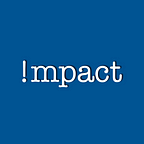“What CEOs Can Do Now… To Make D&I Work More Effectively for Their Black Professionals” — Keith Wyche
While the world still struggles with the aftermath of the murder of George Floyd and Breonna Taylor, many workplaces have shifted focus on the impact it has had on racial injustice and police reform, as many of Corporate America’s Executives are coming to terms with the impact this will have on their organizations. These tragic events have forged change and direction within certain organizations to bring awareness and more efforts to diversify companies. Directors are searching to drive meaningful change in this country but additionally within their own organization. This has been a major flashpoint within Corporate America.
Looking at it from a philanthropic standpoint, many high-profile companies have pledged millions of dollars to fund solutions that address the topic of systemic racism within the sectors of Education, Finance, Social Injustice and Healthcare. However, their focus has now shifted as they look inside their organizations, CEO’s find themselves asking, “what can I do NOW to improve the effectiveness of my company’s D&I efforts”? As many different diverse groups have benefitted from certain D&I initiatives, CEO’s are facing the reality that their Black employees and co-workers have not reaped the same rewards; however, this is something that is changing progressively.
Below are four areas that CEOs and Executives can address to improve the effectiveness of their D&I efforts for ALL of their diverse employees:
- Focus on creating a culture of INCLUSION. For example, this means recruiting and hiring all the diverse talent there is out there. Employee listening is something very important to all companies. If these employees do not feel like they are valued or welcome you have not developed a diversity talent pipeline. In turn, you have created a diversity “turnover” pipeline which leads to lower productivity rates within organizations.
- Providing “EQUALITY of Access” to Developmental and Promotional Opportunities. Many companies are shifting their opportunities to all employees, instead of leaders or executives, as anyone can benefit from them. A multitude of companies should be awarded for their efforts in creating and executing programs which are focused on developing the women within their organizations. Whether this be leadership roles, personal growth or development, or networking. CEO’s should follow these “Best Practices” to make sure all diverse groups and people are given the same equal access to different benefits.
- FOCUS equally on Mid-level diverse talent to build a robust leadership pipeline. Unfortunately, most of the diverse leadership employees sit at lower levels of management. Once you get into middle and senior executive ranks, these numbers plummet. Increasing the range of focus will greatly benefit the company with a wider range of perspectives and talent of those qualified for senior positions.
- Lastly, CHALLENGE the management team to Identify & support high-potential employees to help expand and accelerate their development. If you do not expand and open up you are at risk for losing diverse high potential earning talent as well as a high employee turnover which is every company’s nightmare.
Black professionals have worked hard, been continuous learners, and top performers adding to professional development. They have earned the right to be considered for executive positions, high visibility projects, and larger roles adding greater value to the organization. If these issues are not addressed, you will lose these high-potential Black professionals within different sectors and the human capital ROI you’ve made in them.
You can view the original article here.
***
Keith Wyche is a change management leader who strives to assist organizations in reaching their potential. With decades of experience managing billion-dollar businesses across several industries, Keith applies a holistic approach to sustainable and efficient change. Keith is an author and leader who advocates for diversity, equity and inclusion in workplace talent and in customers through bridging community gaps. His vast experience and skills allow him to turn around struggling organizations and create strategic solutions for the best results.
